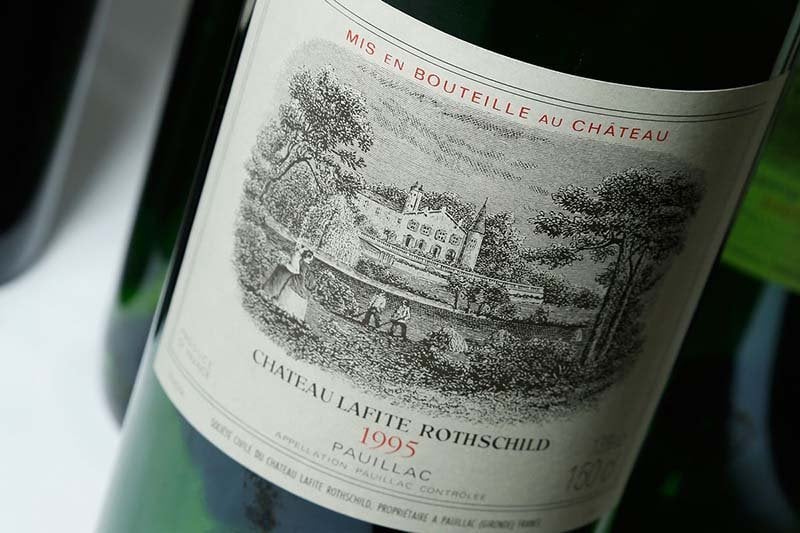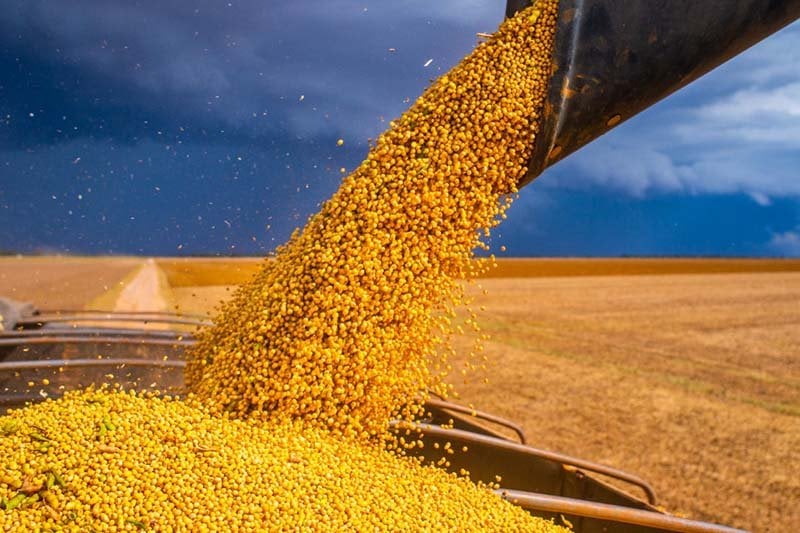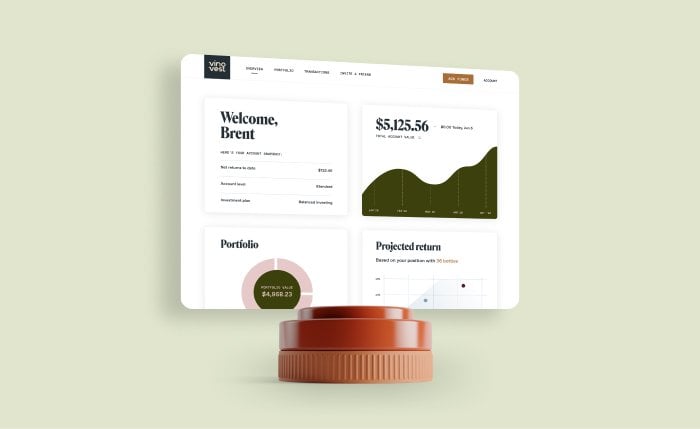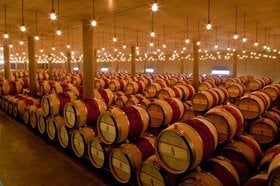What Is An Alternative Commodity Investment?
While there’s nothing wrong with traditional investments like stocks and bonds, alternative investments can be particularly appealing for investors looking to diversify.
Commodities are one such alternative investment that often comes to mind.
But, what exactly is an alternative commodity investment? What are the pros and cons?
In this article, we’ll answer those questions and more, including how to invest in commodities and how Vinovest can help you cash in on a commodity alternative.
Further reading
- Learn more about the Best Commodities to Hedge Against Inflation in 2022.
- Discover all you need to know about Illiquid Alternative Investments as well.
What Is An Alternative Commodity Investment?

Commodities are an alternative investment and a vital component of the global economy. They include everything from the fuel in your car to the food on the supermarket shelves to the raw materials required for construction.
Some of the best-known commodities include precious metals like gold and platinum, oil, natural gas, and wheat. Therefore, an alternative commodity investment is simply investing in commodities.
Commodities can be further broken down into two broad categories: soft and hard commodities.
- Soft commodities include coffee, sugar, cocoa, livestock, and fruit. Generally, soft commodities refer to things that are grown rather than mined.
Soft commodities tend to be more volatile as their price-setting mechanism depends on several external factors. Things like the environmental conditions of a country have a significant impact on soft commodities, which is why many agrarian economies are susceptible to climate change.
Bumper crops are another factor that affects soft commodities. A bumper crop is an unusually abundant harvest, which can lower prices by creating a surplus in the market.
- Hard commodities generally refer to materials that need to be extracted, including gold, rubber, and oil. Hard commodities form the basis of a country's economic health, and we can monitor global demand for these resources to gauge the future stability of an economy.
Pros And Cons Of An Alternative Commodity Investment
It’s essential to understand the pros and cons before making a commodity investment. Here are a few to consider.
Pros

- Diversification: Commodities tend to have a minimal correlation with traditional investments like stocks and bonds, making them helpful in spreading risk.
The relationship between commodities and stocks may even turn negative during times of economic crisis. Between 1970 and 2015, the annual returns of the Bloomberg Commodity Index had a minimal correlation of 0.3 to the S&P 500.
- Liquidity: If investing in a commodity fund, you benefit from a much higher level of liquidity. This means you can sell them almost anytime, giving them an advantage over things like real estate.
- Inflation: Commodity investing can pay off during rising inflation. Commodity prices rise as inflation rises, which means the value of your portfolio rises too.
Research from Vanguard found that over the last decade, commodities’ inflation beta (or the expected reaction to a unit of inflation) fluctuated between 7 and 9. This implies that a 1% rise in unexpected inflation equates to an increase of between 7% and 9% in commodities.
- Exposure: Commodities incorporate a broad range of assets. An investor can choose between investing in multiple commodities or picking specific assets.
Cons

- Volatility: Commodities are notoriously volatile. Since 1983, the quarterly volatility of crude oil has ranged from 12.63% to over 90%. Soybeans have fluctuated from roughly 10% to over 75% since 1970. Gold has been somewhat more stable, ranging from 4% to 40% since the mid-1970s.
- Environmentally unfriendly: Although regulations governing sustainable practices in livestock farming, mining, and extraction exist, the procedures and mechanisms used continue to come at the cost of the environment.
- No income: Unlike stocks and fixed income investments, commodities don't generate revenue, so they don’t pay dividends. Your investment's total return or loss depends entirely on the asset's underlying price.
- Geopolitical risks: Commodity prices are heavily influenced by various economic and geopolitical factors. For example, if OPEC decides to increase oil production, its price will decrease, and vice versa.
How To Make An Alternative Commodity Investment
There are several ways of adding commodities to your portfolio.
1. Commodity futures

Essentially, a futures contract is a legal agreement to buy or sell a commodity at a predetermined price at an agreed time. Buyers take the obligation to purchase the underlying commodity once the contract expires.
These types of investment funds are one of the most common ways of investing in commodities. You can buy a futures contract using debt, putting up a relatively low amount of money to open a contract.
Similarly, there are also managed futures, where a licensed Commodity Trading Advisor oversees a portfolio of futures positions. A Commodity Trading Advisor (CTA) can be an individual or an organization. CTA’s performed well in 2021, with managed futures giving returns of 5.21%.
But, bear in mind that commodity futures are riskier than other commodity investments.
2. Physical commodities

Investors can also purchase a physical commodity, such as cattle or oil. However, you probably won’t want to own these assets directly. Owning a physical commodity comes with additional challenges.
Instead, precious metals are a far easier commodity investment and a good hedge against inflation. You can buy gold bullions or gold coins, though be sure that you’re getting as close to the market price as you can.
The biggest downside to owning physical gold is the risk of theft. Additionally, your investment might take a knock if you sell in a hurry since getting the full market price can be challenging.
3. Commodity stocks

For investors favoring more traditional asset classes but wanting commodity exposure, buying stock in commodity producers is an alternative.
There are a couple of benefits to buying commodity stocks. Firstly, you win when commodity prices rise as the producer’s profits likely rise in tandem. Secondly, the miner can increase production over time to increase profits.
Though it’s important to note that buying individual stocks requires lots of analysis, and investing in just a few stocks limits your commodity exposure.
4. Commodity ETF

A commodity ETF (exchange traded fund) provides exposure to a range of commodity producers. These investment funds offer all the benefits of portfolio diversification while still having the option of gaining focused exposure to a specific commodity, such as gold.
Although there are plenty of commodity funds to pick from, the iPath Bloomberg Commodity Index Total Return ETN (DJP) is one of the most balanced, with no commodity weighing more than 12% of the investment portfolio.
This diversified approach has paid off so far in 2022, with year-to-date returns exceeding 30%. The iPath Bloomberg Commodity Index is a solid option for a long-term commodity investment.
5. Commodity mutual fund

A commodity mutual fund is excellent for diversifying as it provides exposure to the commodity market while avoiding some of the risks of commodity futures. Generally, a commodity mutual fund will invest in commodity businesses like mining companies and actual commodities.
The advantage of this approach is that commodity funds may perform well even if commodity prices are dropping.
6. Hedge funds

A hedge fund is an investment pool managed by a professional manager utilizing various investment strategies. They often buy and trade unique assets with borrowed money to beat the market.
They can provide good commodity exposure, but you typically need to be an accredited or institutional investor to invest in hedge funds because of the risks and costs involved.
Hedge funds have increasingly been investing in the commodity market and may hold a variety of commodities from food to gas. They may also use several financial instruments, including futures, options, debt, and equity.
Commodity-focused hedge funds generated strong returns in 2021. The Bridge Alternatives Commodity Hedge Fund Index tracks the largest commodity-focused hedge funds globally and has an Equally Weighted Index and an Asset Weighted Index. The Equally Weighted Index grew 19.39% in 2021, while the Asset Weighted Index grew 21.16%.
An Alternative to Commodities

While commodities are a solid investment opportunity, offering a good means of diversification and serving as a haven during inflationary periods, investors look more towards ESG investing. ESG investing, or Environmental, Social, and Governance investing, refers to investing in responsible companies.
Considering that commodities can be environmentally damaging, investors are looking for an equally profitable alternative asset that’s kinder to the environment.
- For those with an eye on ESG investing, wine is a great investment opportunity. Wineries have begun adapting to climate change and have dramatically reduced their environmental impact by using renewable energy, biodiversity, soil revitalization, water conservation, and other sustainable winemaking strategies.
- Wine is also attractive from a purely financial perspective. While commodities tend to be a cyclical investment, fine wine is a remarkably stable asset class. For example, oil prices were decimated during the early days of the Covid-19 pandemic, falling into the negative for the first time on record. The Liv-ex 1000, one of the broadest fine wine indices, declined by 2.7% in 2020.
- Additionally, wine has a long history of producing good returns. Between January 2004 and December 2021, the Liv-ex 1000 index appreciated by more than 324%, climbing 16.5% in 2021 alone.

For those looking to take advantage of this captivating asset class, there’s Vinovest. Vinovest is a leading fine wine investment platform that offers the easiest way of sourcing, managing, and growing a diversified portfolio.
Here’s how Vinovest works:
- Step 1: Sign up. All you need is a name, email address, and password.
- Step 2: Complete a short questionnaire. Your answers will help Vinovest’s wine experts determine your preferred investment style.
- Step 3: Fund your account. You only need a minimum of $1,000.
- Step 4: Based on the answers to the questionnaire, Vinovest’s AI will offer some investment recommendations.
- Step 5: Watch your portfolio grow.
Similarly, whiskey is an equally good investment. It has a minimal correlation with the stock market and stores well, making it useful for portfolio diversification over the long term.
Fine Wine: The Perfect Alternative To Commodities

Commodity investing can be lucrative and help shield your investment portfolio from inflation while still offering decent returns when the stock market struggles.
However, alternatives like commodities are volatile, prone to supply and demand fluctuations, and often damage the environment.
For a stable alternative asset offering solid returns year-round, consider investing in fine wine through Vinovest. Simply sign up to take advantage of this lucrative investment opportunity.



